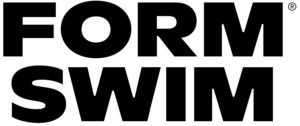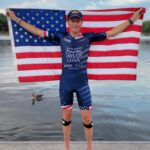My first “A”s series of races of 2024, the USAT Multisport National Championships are just 10 days away. I’m already starting to think about and get organized for the races. My goal for big races, particularly those![]() that require air travel, is to front load and organize all of the tasks that burn cognitive and physical energy and create stress, so that race week can be as relaxing and energy saving.
that require air travel, is to front load and organize all of the tasks that burn cognitive and physical energy and create stress, so that race week can be as relaxing and energy saving.
I already addressed this topic at a high level not long ago. Today, I want to share with you my little secret tool for reducing race-week stress. I’m talking about the humble checklist. Admittedly, I’m not the first  person who has ever thought of this special tool and I’m not the only one who uses a checklist. At the same time, I’m surprised to learn how few serious age-groupers don’t use a checklist. And even among the pros, it is more the exception than the rule.
person who has ever thought of this special tool and I’m not the only one who uses a checklist. At the same time, I’m surprised to learn how few serious age-groupers don’t use a checklist. And even among the pros, it is more the exception than the rule.
As you head out the door to the airport, as you’re about to take off, as you arrive at your destination airport, what question strikes the most fear in your heart?: “Did I forget something?” On race morning, when you begin to lay out your transition: “Did I forget something?” When you leave the transition area for the last time before your race start: “Did I forget something?”
for the last time before your race start: “Did I forget something?”
And, as any experienced triathlete can attest, the answer that strikes even more terror is: “OMG, I forgot that!!!” where the “that” is something really important. Just asking that question (multiple times!) between when you leave home and begin the swim is a massive stress producer that will hurt your race efforts.
Writing about this issue isn’t just of professional interest to me in my work with triathletes; rather, it is  deeply personal because I have learned firsthand and the hard way why having (and looking at!) a checklist is such an important tool during race week and on race day.
deeply personal because I have learned firsthand and the hard way why having (and looking at!) a checklist is such an important tool during race week and on race day.
At the USAT National Championships in Milwaukee last year, as I prepared my transition area first thing in the morning of the Sprint, I forgot to check my checklist, something that I have never neglected to do in all my years of racing. I forgot two really important things that I know impacted by race that day. First, I forgot to put my Powerbar energy chews in my bento box. Second, I forgot to take my pre-race gels out of my backpack before I dropped it off at the bag tent. Bottom line I wasn’t properly fueled to go the distance and it cost me (I missed 2nd place in my age group by 7 seconds!).
Second, I forgot to take my pre-race gels out of my backpack before I dropped it off at the bag tent. Bottom line I wasn’t properly fueled to go the distance and it cost me (I missed 2nd place in my age group by 7 seconds!).
Benefits of a Checklist
Checklists offer several important benefits that can translate into better performances on race day. Psychologically, your mind is clear of unnecessary clutter making it easier to focus on your essential race  preparations. Also, less doubt, questioning, and second guessing. Checklists also increase familiarity, predictability, and control, three perceptions that encourage a comfortable and relaxed mind and body state. And you’re saving cognitive energy by not having to think as much or make decisions.
preparations. Also, less doubt, questioning, and second guessing. Checklists also increase familiarity, predictability, and control, three perceptions that encourage a comfortable and relaxed mind and body state. And you’re saving cognitive energy by not having to think as much or make decisions.
Emotionally, a checklist reduces worry, anxiety, stress, and, if items are forgotten, an extreme panic and fear reaction.
Physiologically, a checklist mitigates the activation of the sympathetic nervous system, commonly known as the “fight-or-flight reaction,” caused by the above psychological and emotional reactions. All of these, research shows, can have a significant negative impact on endurance-sport performance.
as the “fight-or-flight reaction,” caused by the above psychological and emotional reactions. All of these, research shows, can have a significant negative impact on endurance-sport performance.
Two Checklists
Travel checklist. As we all know, triathlon is a complex sport that involves a lot of “stuff” (more than 70  items on my list!). And, as some of us have learned the hard way, forgetting just one of those many items can have real consequences on how we perform in a race. That impact grows exponentially when we fly to races because there is so much more that needs to be brought. This list includes:
items on my list!). And, as some of us have learned the hard way, forgetting just one of those many items can have real consequences on how we perform in a race. That impact grows exponentially when we fly to races because there is so much more that needs to be brought. This list includes:
- Equipment & gear
- Race Clothing
- Other clothes
- Bike technology
- Other technology and necessities
- Food
- Medical
Here is a link to my Triathlon Travel Checklist that you can download and modify based on your personal needs and preferences.
Race-day checklist. For race day, I have identified no fewer than 40 different things I need to have or do before I head to the swim start. That’s a lot to remember! This list includes:
do before I head to the swim start. That’s a lot to remember! This list includes:
- Practical stuff
- Fuel
- Pre- & post-race clothing
- Swim stuff
- Bike stuff
- Run stuff
- Transition area items
- Transition area set-up
Here is a link to my Race-day Checklist that you can also download and modify based on your personal  needs and preferences.
needs and preferences.
If you want to have a (relatively) stress-free lead-up to your race, you want to minimize how much you have to think between when you start packing and when you enter the water. You can help yourself immensely if all you have to do is look at a checklist and check off all of the items listed (and double check to be sure). In doing so, you create a psychological, emotional, and physiological space that is clear of clutter, negative emotions, and excess physical activation. In turn, what started as reviewing your humble checklists turns into a valuable pre-race tool that will help you give your best effort and, hopefully, enable you to achieve your race-day goals.
so, you create a psychological, emotional, and physiological space that is clear of clutter, negative emotions, and excess physical activation. In turn, what started as reviewing your humble checklists turns into a valuable pre-race tool that will help you give your best effort and, hopefully, enable you to achieve your race-day goals.
Oh, one last key aspect of checklists, they have no value unless you actually look at them!







